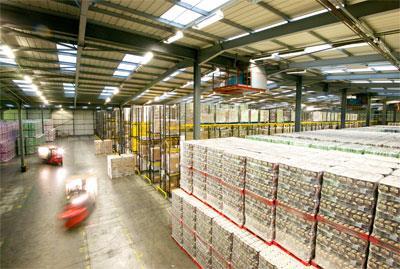
The amount of warehousing space being built must rise fivefold if the UK is to keep pace with the e-commerce market, according to research by law firm Addleshaw Goddard.
As online retailers compete on speed of delivery to win custom, the demand for industrial property is outstripping supply, with a premium being paid by the largest retailers for well-located sites with advanced fit-outs.
The research included 12 policy recommendations that it said are required to meet demand for swift deliveries.
These include councils being made to designate land for industrial use; the government identifying more land for building warehouses on; and Highways England collaborating closely with Network Rail to better integrate capacity between road and rail. It also recommended an overhaul of business rates.
Addleshaw Goddard quoted figures from commercial real estate firm Colliers, which estimated that to keep pace with an e-commerce sector making up 20% of UK retail, the UK/Ireland market requires 18 million ft² of logistics space to be built annually – a huge increase on the 3.5 million ft² projected to be built over the next 12 months.
The report also warned about the implications of Brexit.
It said: “Funding and grants are available from the EU to assist with major infrastructure projects that encourage the development of industrial and logistics property. This finance will no longer be available once the government signs Article 50 and formally begins the leaving process.
“The government must commit to at least matching existing funding once the UK has left the EU.”
The UKWA said it was leading a special advisory group that will recommend solutions to the government to protect supply chains and logistics after Brexit.
UKWA CEO Peter Ward said: “To ensure the UK remains competitive, there are key issues where government needs input from our industry, particularly in respect of the logistics infrastructure.”
Potential suggestions included allowing UK ports, especially those with surrounding estates and land banks, to operate as freezones.














